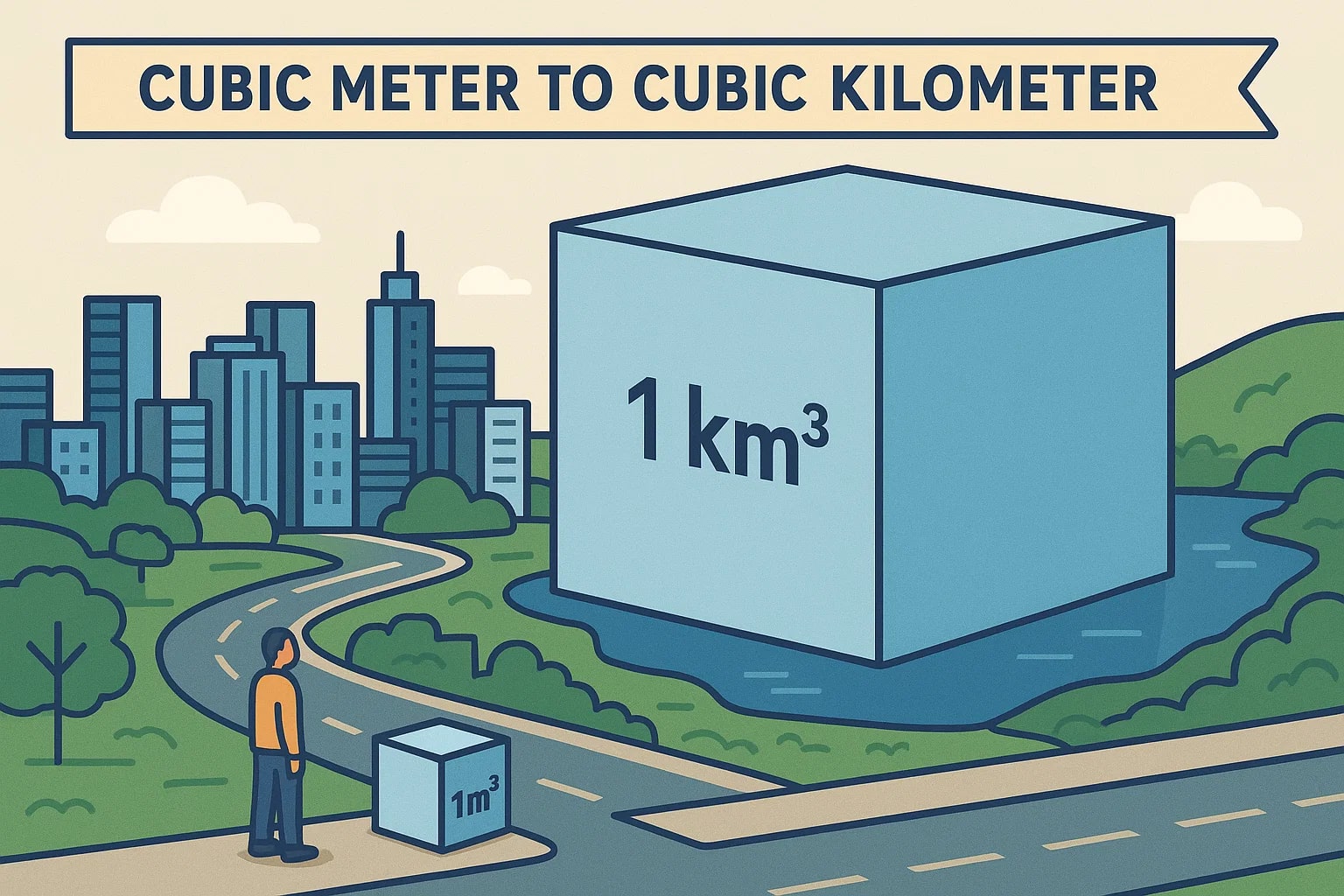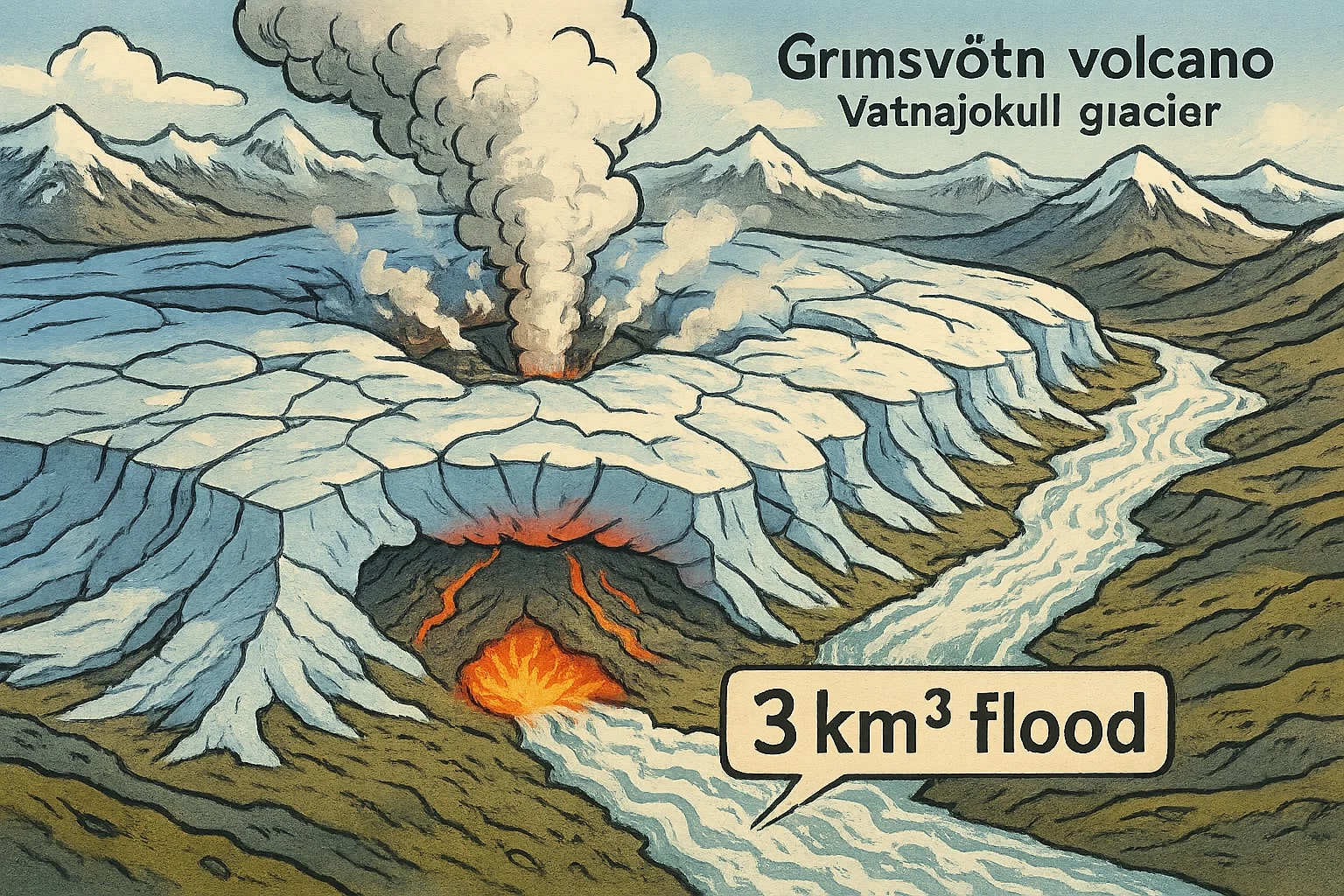cubic meter to cubic kilometer – How to convert m³ to km³
Looking to convert cubic meter to cubic kilometer? While both are metric units of volume, they operate at vastly different scales. Converting from m³ to km³ is useful in fields like hydrology, geology, space science, and even planetary modeling—where massive quantities of volume are the norm.
For more everyday conversions, visit our Volume Converter, or explore the broader Conversion Tool collection.

What Is a Cubic Meter?
A cubic meter (m³) is the SI unit for volume and measures the space inside a cube that is 1 meter on each side. It’s commonly used for:
-
Shipping containers
-
Concrete and construction material
-
Water, air, and fuel tank capacities
1 m³ equals:
-
1,000 liters
-
35.3147 cubic feet
-
1,000,000 cubic centimeters
What Is a Cubic Kilometer?
A cubic kilometer (km³) is a much larger SI unit of volume, representing a cube with sides of 1 kilometer (1,000 meters). It’s typically used to express:
-
Volume of oceans, lakes, or glaciers
-
Capacity of reservoirs or underground aquifers
-
Planetary mass distribution or atmospheric studies
1 km³ = 1,000,000,000 m³ (1 billion cubic meters)
How to Convert Cubic Meters to Cubic Kilometers
The conversion is a simple matter of metric scaling: 1 m³ = 0.000000001 km³
Formula: Cubic kilometers = Cubic meters × 1 × 10⁻⁹
Example: 850,000,000 m³ = 850,000,000 × 0.000000001 = 0.85 km³
This is common when estimating water in reservoirs or volcanic ejecta volume after eruptions.
Did you know?
-
The Amazon River discharges approximately 209,000 m³ of water per second into the Atlantic Ocean—that’s over 6.6 km³ of water daily.
-
Earth’s total ocean volume is estimated at around 1.332 billion km³, which equals an unimaginable 1.332 × 10¹⁸ m³. That’s a 1 followed by 18 zeroes!
-
The Great Pyramid of Giza, if hollow and used as a tank, could hold about 2.5 million m³ of volume, or 0.0025 km³. Still only a tiny splash in geological terms.
The Story of Iceland’s Subglacial Volcano
In 1996, a subglacial volcano in Iceland called Grímsvötn erupted beneath the Vatnajökull glacier, leading to a phenomenon called a jökulhlaup—a massive glacial flood. Scientists estimated that over 3 km³ of water was released into nearby rivers, flooding roads and changing landscapes.
To understand the danger and prepare evacuations, geologists had to rapidly convert m³ (local river flows) into km³ (glacial melt predictions)—highlighting the real-world importance of large-scale volume conversions.

Conclusion
While cubic meters work well for everyday and industrial needs, sometimes you need to scale up—way up. That’s where cubic kilometers come in. Whether you're measuring ocean water, volcanic eruptions, or planetary features, converting m³ to km³ ensures precision across vast dimensions.
Use our Volume Converter for fast and accurate conversions, or dive into the full Conversion Tool collection for hundreds of unit calculations.
Jetcalculator brings you the tools to measure the world—big or small.

